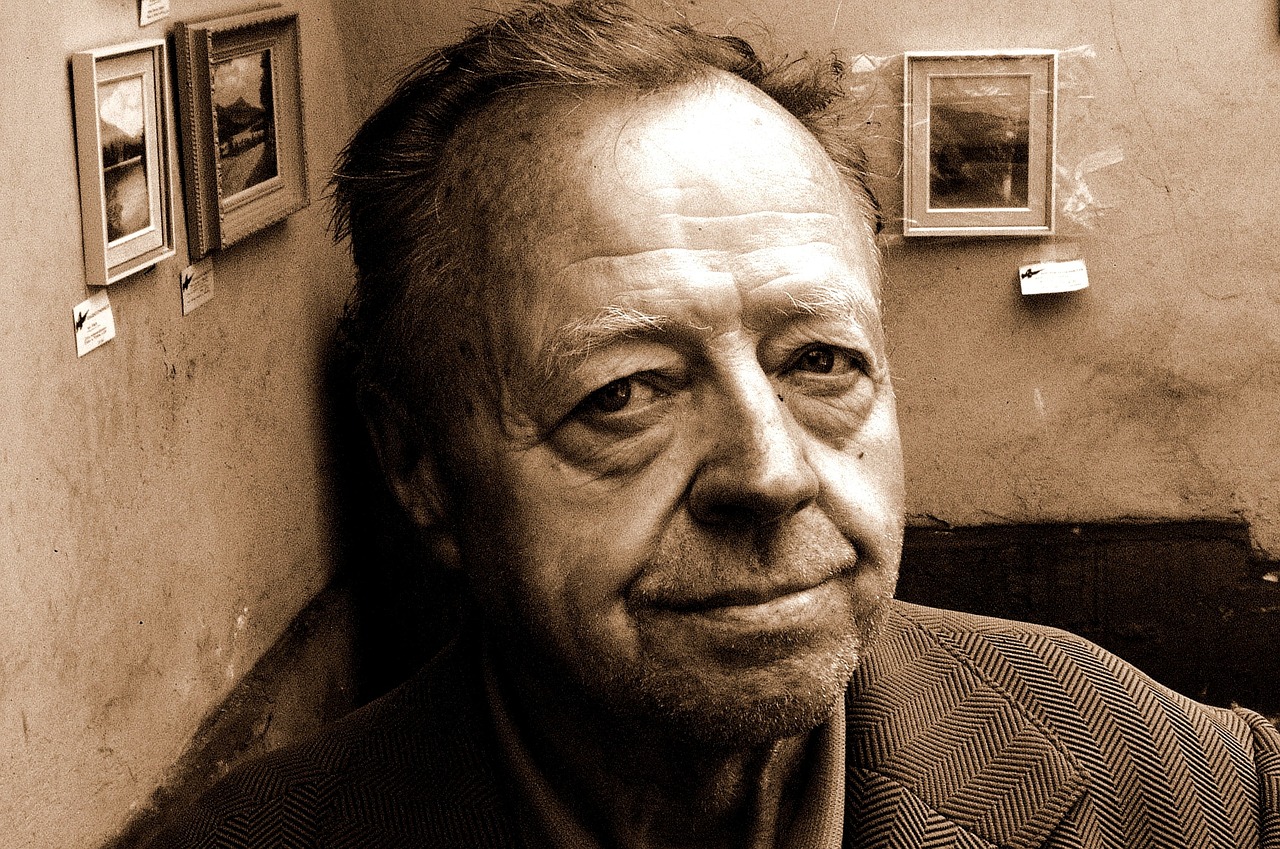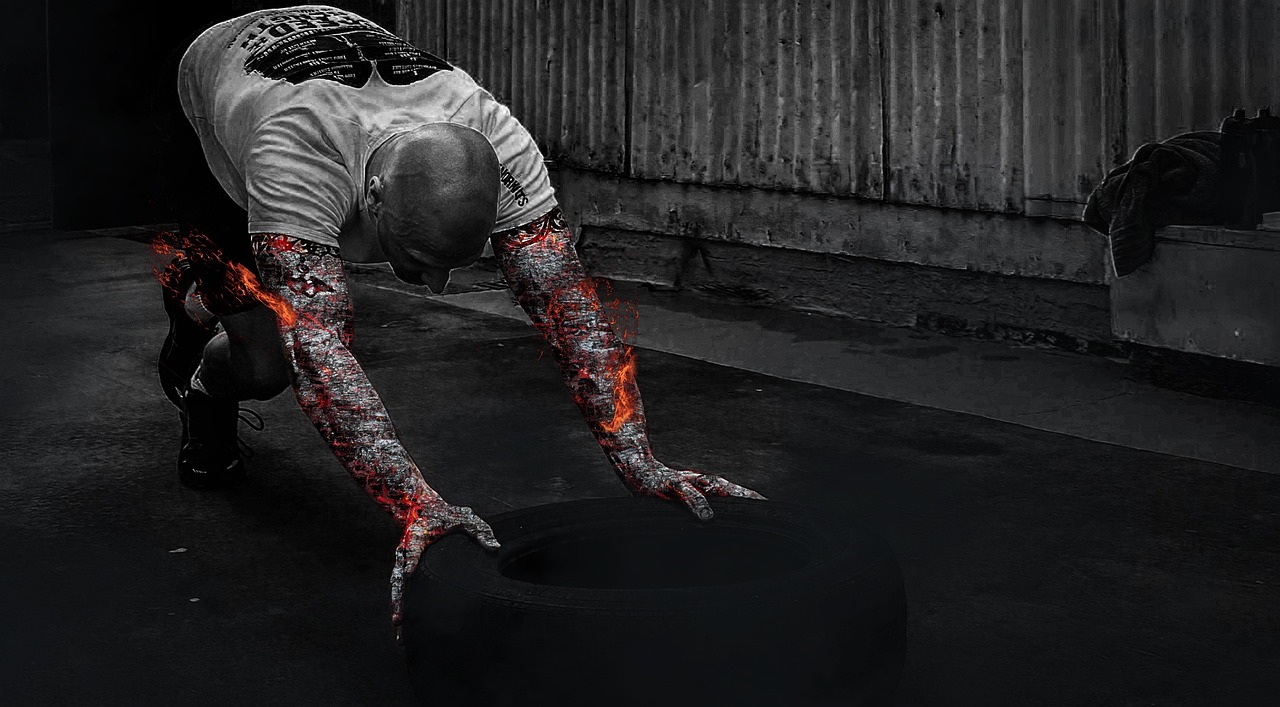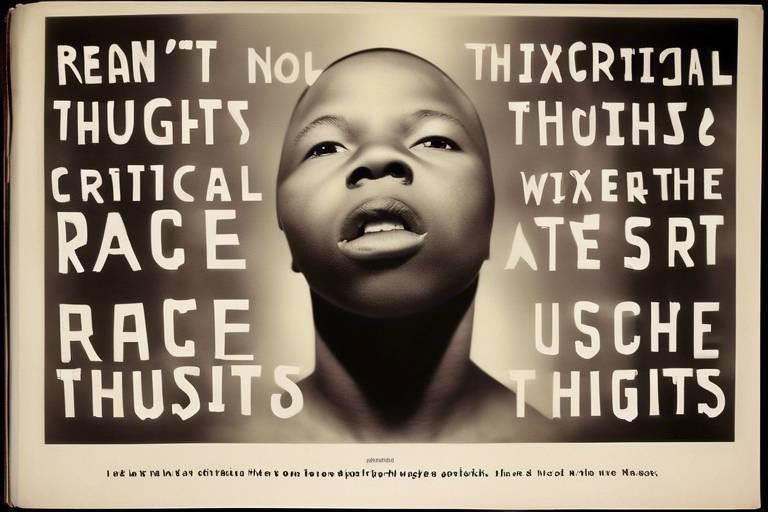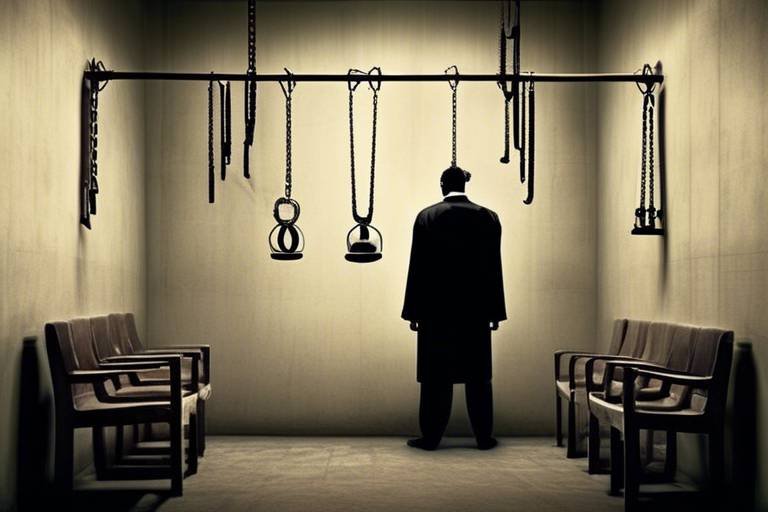Philosophy of Pain - A Nuanced Discussion
Welcome to a journey that intertwines the realms of philosophy and pain. This article delves into the intricate relationship between these two profound concepts, exploring various perspectives, implications, and interpretations of pain in human experience and existence. Pain is not merely a physical sensation; it is a complex phenomenon that shapes our thoughts, actions, and even our very essence as human beings. So, what exactly is pain, and why does it matter in the grand scheme of life? Let’s uncover the layers of this multifaceted topic.
Philosophers have long grappled with the concept of pain, seeking to define it, categorize it, and understand its role in our lives. At its core, pain can be defined as an unpleasant sensory and emotional experience associated with actual or potential tissue damage. However, this definition barely scratches the surface. Pain can be classified into various types, including acute, chronic, physical, and emotional pain. Each type carries its own implications and challenges, influencing how we perceive and respond to our suffering.
From a philosophical standpoint, pain is often viewed as a necessary component of the human experience. It serves as a reminder of our vulnerability and mortality, prompting questions about existence and meaning. Why do we feel pain? Is it merely a biological response, or does it carry a deeper significance? These questions have led philosophers to explore the intricate relationship between pain and consciousness, examining how our experiences of pain shape our understanding of reality.
While pain is a physical sensation, suffering encompasses the emotional and psychological responses to that pain. It’s essential to distinguish between the two, as suffering can persist long after the physical pain has subsided. In philosophical terms, suffering is often viewed as a fundamental aspect of the human condition, raising moral considerations about empathy, compassion, and the ethical implications of alleviating suffering.
Existentialist thinkers like Jean-Paul Sartre and Albert Camus provide profound insights into the nature of pain and suffering. They emphasize the importance of individual experience, suggesting that pain can lead to a deeper understanding of oneself and the world. For Sartre, pain is intertwined with the concept of freedom; it forces individuals to confront their choices and the absurdity of existence. Camus, on the other hand, delves into the idea of the absurd, highlighting the contradictions in human suffering and our quest for meaning in a seemingly indifferent universe.
From an absurdist perspective, pain is not just a burden; it is also a lens through which we can view the absurdity of life. The struggle against pain can be seen as a reflection of our desire for meaning in a world that offers none. This paradox invites us to embrace our suffering, recognizing it as an integral part of our existence. How do we find meaning in pain? Perhaps it lies in our ability to confront it, to acknowledge its presence, and to seek understanding amidst the chaos.
Existentialists argue that pain is intimately linked to our sense of freedom. When we experience pain, we are faced with choices: we can succumb to despair, or we can strive to find meaning and agency in our suffering. This notion of freedom challenges us to take responsibility for our experiences, urging us to transcend our pain and seek purpose in adversity. In this way, pain becomes not just a source of suffering, but also a catalyst for personal growth and transformation.
As we navigate the complexities of pain, we must also consider the ethical implications of pain management. Healthcare professionals often face moral dilemmas when it comes to alleviating suffering. How do we balance the need for pain relief with the potential for addiction or over-medication? These questions are critical in shaping the future of pain management, highlighting the importance of compassion, empathy, and ethical considerations in our approach to suffering.
Interestingly, pain is not experienced in a vacuum; it is heavily influenced by cultural beliefs and practices. Different cultures interpret and respond to pain in unique ways, shaping how individuals cope with suffering. For instance, some cultures may view pain as a necessary rite of passage, while others may see it as a form of punishment or a test of character. Understanding these cultural perspectives can enrich our comprehension of pain and its implications for the human experience.
Religious traditions offer diverse interpretations of pain, often framing it within the context of spiritual growth and redemption. For example, in Christianity, suffering is sometimes viewed as a means of drawing closer to God, while in Buddhism, pain is seen as an inevitable part of life that can lead to enlightenment. These perspectives provide valuable insights into coping mechanisms and the significance of pain within spiritual contexts.
Lastly, pain finds its expression through art and literature, serving as a powerful medium for reflection and interpretation. Artists often channel their own experiences of suffering into their work, creating pieces that resonate with others facing similar struggles. From poignant poetry to haunting paintings, the representation of pain in art allows us to confront our suffering, find solace, and connect with the shared human experience.
- What is the difference between pain and suffering? Pain refers to the physical sensation, while suffering encompasses the emotional and psychological response to that pain.
- How do philosophers view pain? Philosophers explore pain as a complex phenomenon that influences our understanding of existence, consciousness, and morality.
- What role does culture play in the experience of pain? Cultural beliefs and practices significantly shape how individuals interpret and respond to pain, impacting coping mechanisms and perceptions of suffering.
- How can art help in understanding pain? Art serves as a powerful medium for expressing and interpreting pain, allowing individuals to connect with their suffering and that of others.

Understanding Pain: A Philosophical Perspective
When we think about pain, it often conjures up visceral feelings and memories that can be hard to articulate. Pain is not just a physical sensation; it is a profound experience that intertwines with our very essence as human beings. Philosophers have long grappled with the nature of pain, attempting to define it, categorize it, and understand its implications on our consciousness and existence. At its core, pain can be viewed through various lenses—biological, psychological, and existential. Each perspective offers unique insights into how we experience and interpret pain in our lives.
To truly grasp the philosophical underpinnings of pain, we must first consider its definitions. Pain is often categorized into two main types: acute and chronic. Acute pain is a sharp, immediate sensation that typically arises from injury or illness, while chronic pain persists over time, often without a clear cause. This distinction is crucial, as it influences not only how we manage pain but also how we philosophically approach the concept. For instance, while acute pain may prompt immediate action—like seeking medical help—chronic pain often leads to deeper existential questions about suffering, endurance, and the meaning of life itself.
Philosophers like Friedrich Nietzsche and Arthur Schopenhauer have explored the idea that pain is an intrinsic part of human existence. Nietzsche famously stated, “What does not kill me makes me stronger,” suggesting that pain can serve as a catalyst for personal growth and resilience. This perspective encourages us to view pain not merely as something to be avoided but as a vital part of our journey, shaping our character and understanding of the world. On the other hand, Schopenhauer viewed pain as a fundamental aspect of life that ultimately leads to suffering, arguing that the human experience is marked by a constant struggle against pain and desire. This duality presents a philosophical dilemma: is pain a necessary evil that enriches our existence, or is it an affliction we must endure?
Moreover, the role of pain in consciousness cannot be overlooked. Philosophers like René Descartes posited that the experience of pain is essential for self-awareness. When we feel pain, we are reminded of our own existence; it forces us to confront our physicality and, in many ways, our mortality. This awareness can lead to profound reflections on life, purpose, and the human condition. In this light, pain becomes a teacher, compelling us to ask difficult questions: What does it mean to suffer? How do we find meaning in our pain? And ultimately, how does pain shape our relationships with others?
In conclusion, understanding pain from a philosophical perspective requires us to navigate a complex interplay of definitions, experiences, and implications. Pain is not merely a hindrance; it is a rich tapestry woven into the fabric of our lives, prompting us to explore our existence in deeper, more meaningful ways. Whether we view it as a necessary challenge, a source of growth, or a fundamental aspect of suffering, pain undeniably shapes our understanding of what it means to be human.
- What is the philosophical definition of pain? Pain is often defined as a complex experience that encompasses both physical sensations and emotional responses, influencing our consciousness and existence.
- How do philosophers differentiate between pain and suffering? Pain is typically seen as the physical sensation, while suffering refers to the emotional and psychological responses to pain.
- Can pain lead to personal growth? Yes, many philosophers argue that pain can serve as a catalyst for resilience and self-discovery, prompting individuals to confront their own existence.
- What role does pain play in consciousness? Pain can heighten self-awareness, reminding us of our physicality and mortality, and compelling us to reflect on life’s meaning.

The Nature of Suffering
Suffering is a complex tapestry woven into the fabric of human existence. While pain is often seen as a *physical sensation*, suffering transcends the mere experience of discomfort. Philosophically speaking, suffering encompasses emotional, psychological, and existential dimensions, making it a nuanced topic worthy of exploration. The distinction between pain and suffering is essential; pain can be a fleeting moment, but suffering often lingers, echoing in our thoughts and feelings long after the physical pain has subsided.
To illustrate this distinction, consider the following: pain might be the sharp jab of a needle, a reminder of a medical procedure, while suffering could be the anxiety that follows, the fear of what that needle signifies. This deeper, emotional layer of suffering can lead to profound questions about the meaning of life, our purpose, and the nature of our existence. It’s not just about *what hurts*, but *why it hurts* and *what we do with that hurt*.
In philosophical terms, suffering can be categorized into several types, each with its own implications:
- Physical Suffering: This is the most straightforward form of suffering, relating to bodily pain and discomfort.
- Emotional Suffering: This includes feelings of sadness, grief, and despair, often stemming from loss or trauma.
- Existential Suffering: This form delves into the philosophical questions of life, such as the search for meaning and the confrontation with mortality.
Understanding these categories can help us navigate the murky waters of human experience. For instance, existential suffering often leads individuals to grapple with questions like, “What is the purpose of my pain?” or “Is there a greater meaning behind my suffering?” These inquiries can be both enlightening and distressing, as they force us to confront our vulnerabilities and the reality of our mortality.
Moreover, the implications of suffering extend beyond the individual. They ripple through our social and moral landscapes, prompting discussions about empathy, compassion, and the ethical responsibilities we hold towards one another. For instance, when someone suffers, it often elicits a response from those around them, raising questions about how we can alleviate that suffering. Are we merely bystanders, or do we have a moral obligation to intervene?
Philosophers like Friedrich Nietzsche famously stated, “To live is to suffer, to survive is to find some meaning in the suffering.” This perspective suggests that suffering is not just an obstacle to be overcome but a fundamental aspect of the human condition that can lead to personal growth and transformation. It invites us to explore how we can derive meaning from our pain, ultimately enriching our lives and deepening our understanding of ourselves and others.
In the end, the nature of suffering is not a simple question with a straightforward answer. It’s a profound inquiry that invites us to reflect on our experiences, our choices, and the intricate connections we share with others. By embracing this complexity, we can gain a more profound appreciation for the human experience, recognizing that while suffering is inevitable, it can also be a source of strength, resilience, and ultimately, *connection*.
- What is the difference between pain and suffering?
Pain is a physical sensation, while suffering encompasses emotional and existential dimensions, often lingering long after the physical pain has subsided. - How can suffering lead to personal growth?
Many philosophers argue that confronting and understanding suffering can lead to a deeper understanding of oneself and one's purpose, fostering resilience and empathy. - Why is it important to discuss the nature of suffering?
Discussing suffering allows us to explore the human condition, encouraging empathy and moral responsibility towards those who are suffering.

Existentialism and Pain
Existentialism, a philosophical movement that emphasizes individual freedom and choice, offers a profound lens through which to examine the concept of pain. Thinkers like Jean-Paul Sartre and Albert Camus grappled with the notion of pain not merely as a physical sensation but as a pivotal aspect of the human condition. For them, pain is intertwined with the essence of existence itself, challenging individuals to confront their own realities and the inherent absurdity of life. Pain, in this context, becomes a catalyst for self-discovery and a means of exploring one's freedom.
When we delve into existentialist thought, we find that pain serves as a reminder of our mortality and the limitations of our human experience. Sartre famously stated, "Existence precedes essence," suggesting that we create our own meaning in a world that often appears indifferent. This perspective implies that pain is not just something to be avoided; rather, it is an integral part of our journey toward authenticity. It forces us to confront uncomfortable truths about ourselves and our existence, pushing us to seek meaning in the chaos.
Moreover, Camus introduced the concept of the absurd, where the human desire for meaning clashes with the universe's silence. In this framework, pain can be viewed as an absurd experience—one that lacks inherent purpose yet still demands our attention. The struggle against suffering can lead to a deeper understanding of what it means to be human. As Camus famously concluded in "The Myth of Sisyphus," we must imagine Sisyphus happy as he embraces his eternal struggle. This analogy serves to illustrate that even in the face of relentless pain and absurdity, there is a form of freedom in our response to it.
In existentialism, the relationship between pain and freedom is particularly intriguing. The experience of pain can often feel like a loss of agency; however, existentialists argue that it is precisely through our suffering that we reclaim our freedom. By confronting pain head-on, we are not merely passive victims but active participants in our own lives. This idea invites us to reflect on how we respond to pain—whether we allow it to define us or use it as a stepping stone toward personal growth and self-affirmation.
To further illustrate this point, consider the following aspects of existentialism and pain:
- Individual Experience: Each person's encounter with pain is unique, shaped by personal history and context.
- Search for Meaning: Pain prompts individuals to question their beliefs and values, leading to a quest for deeper understanding.
- Agency in Suffering: Despite the challenges posed by pain, individuals have the power to choose how they respond to it.
Ultimately, existentialism reframes pain from being merely a negative experience to a profound opportunity for growth and self-exploration. It challenges us to embrace our suffering, not as a burden but as a vital part of our journey. In doing so, we can cultivate resilience, find meaning, and affirm our existence in a world that often feels chaotic and indifferent.

The Absurdity of Pain
The concept of absurdity, particularly in the realm of pain, is a fascinating yet deeply unsettling topic. Imagine standing at the edge of a vast abyss, staring into the unknown, grappling with the realization that pain is often without reason or purpose. This is where absurdism, as articulated by thinkers like Albert Camus, comes into play. Camus posited that life is inherently devoid of meaning, and in the face of this, the experience of pain can feel overwhelmingly paradoxical. We seek to find significance in our suffering, yet often discover that the universe remains indifferent to our plight.
When we confront pain, we may feel a desperate need to assign it a purpose. We ask ourselves questions like, "Why am I suffering?" or "What lesson am I supposed to learn from this?" The absurdist perspective challenges us to accept that these questions may never have satisfying answers. Instead of seeking meaning, we might find a more profound understanding in embracing the absurdity itself. This acceptance can lead to a form of liberation, as we recognize that our suffering is a shared human experience, one that connects us to others who also grapple with their own pain.
To illustrate this point, consider the following:
- Existential Dread: The realization that pain is a universal condition can evoke feelings of dread. Yet, this dread can also foster empathy and a sense of community.
- Rebellion Against Meaninglessness: In accepting the absurd, we can rebel against the notion that our suffering must have a purpose. This rebellion can empower us to create our own meaning.
- Finding Joy Amidst Suffering: Absurdism suggests that even in pain, we can find moments of joy and beauty, reminding us that life is multifaceted.
Moreover, absurdity invites us to reflect on the very nature of existence. Pain, in its various forms—be it physical, emotional, or existential—challenges us to confront our mortality and the fleeting nature of life. It can be a teacher, albeit a harsh one, pushing us to evaluate our values, relationships, and what it truly means to live. In this light, pain is not merely an obstacle to overcome but a fundamental aspect of the human condition that enriches our understanding of life.
Ultimately, embracing the absurdity of pain allows us to navigate our suffering with a sense of agency. Instead of being passive victims of our circumstances, we can choose how to respond to our pain. This perspective encourages resilience, as we learn to find strength in vulnerability and meaning in the seemingly meaningless. In the end, recognizing the absurdity of pain can transform our relationship with suffering, enabling us to live more authentically and fully, even amidst the chaos.
- What is the philosophical definition of pain?
Pain is often defined as an unpleasant sensory and emotional experience associated with actual or potential tissue damage, but philosophically, it encompasses deeper existential questions about suffering and meaning. - How does absurdism relate to pain?
Absurdism posits that life lacks inherent meaning, and thus, our experiences of pain can feel pointless. However, it encourages individuals to create their own meaning in the face of suffering. - Can pain have a positive impact on life?
Yes, pain can lead to personal growth, greater empathy, and a deeper appreciation for joy, as it often prompts individuals to reflect on their values and relationships.

Freedom and Pain
When we think about freedom, we often imagine a state of bliss, where all our desires are met, and pain is but a distant memory. However, the relationship between freedom and pain is far more intricate than it appears at first glance. In existentialist philosophy, pain is not merely a negative experience; rather, it is intertwined with our very essence as individuals. Think about it: how can we truly appreciate joy without experiencing sorrow? How can we understand freedom if we have never felt the constraints of suffering?
Existentialists like Jean-Paul Sartre and Albert Camus argue that pain can be a catalyst for personal growth and self-discovery. They suggest that in confronting our suffering, we are given the opportunity to exercise our freedom. Pain forces us to make choices, to define ourselves, and to seek meaning in our existence. This perspective leads us to the realization that freedom is not just about the absence of pain; it is also about how we respond to it. In a way, pain can be seen as a teacher, guiding us through the labyrinth of life.
Moreover, the experience of pain can illuminate the choices we have in our lives. When faced with suffering, we can either succumb to despair or rise to the challenge. This duality is essential to the existentialist viewpoint. The freedom to choose our response to pain is what ultimately defines our character and shapes our identity. It is a reminder that while we may not have control over the pain we encounter, we do have control over how we let it affect us.
To illustrate this concept, consider the following table that outlines the various responses to pain and their implications for personal freedom:
| Response to Pain | Implications for Freedom |
|---|---|
| Acceptance | Embracing pain as part of life; finding strength in vulnerability. |
| Resilience | Using pain as a motivator for personal growth and change. |
| Despair | Feeling trapped and powerless, leading to a loss of agency. |
| Rebellion | Challenging the sources of pain; asserting one’s freedom through action. |
In essence, the existentialist view posits that pain can enhance our understanding of freedom. It forces us to confront our mortality and the transient nature of life, prompting us to make choices that align with our authentic selves. This journey through pain can be likened to navigating a stormy sea; while the waves may toss us about, it is our steering that ultimately determines our destination.
Furthermore, the concept of freedom in relation to pain extends beyond the individual. It also encompasses our societal responsibilities. How do we, as a community, respond to the suffering of others? This question is crucial, as it highlights the interconnectedness of human experience. Each individual's pain can ripple through the fabric of society, affecting not just the sufferer but also those around them. Thus, the freedom to alleviate suffering becomes a collective endeavor, one that requires empathy and action.
In conclusion, the relationship between freedom and pain is complex yet profound. Pain challenges us to exercise our freedom in ways that can lead to deeper understanding and personal growth. As we navigate through our own pain, let us remember that it is not merely a burden to bear, but also a pathway to discovering who we truly are and what we are capable of becoming.
- What is the existentialist view on pain?
Existentialists believe that pain is an integral part of the human experience that can lead to personal growth and self-discovery. - Can pain enhance our sense of freedom?
Yes, by confronting pain, individuals can make choices that define their identity and assert their freedom. - How does society impact individual pain?
Society plays a role in how pain is experienced and managed, highlighting the importance of collective responsibility in alleviating suffering.

Ethics of Pain Management
When we dive into the , we find ourselves navigating a complex landscape filled with moral dilemmas, societal expectations, and the fundamental question of what it means to alleviate suffering. At the heart of this discussion is the delicate balance between relieving pain and the potential risks associated with various pain management strategies. For instance, while opioids can effectively manage severe pain, their misuse has led to a widespread epidemic, raising ethical concerns about prescribing practices.
Healthcare professionals often face the daunting task of making decisions that weigh the benefits of pain relief against the possible harm that could come from treatment. This responsibility is not taken lightly, as it involves understanding both the physical and psychological aspects of pain. Pain is not merely a symptom; it can be a complex interplay of emotional, social, and biological factors. Therefore, the ethical implications of pain management extend beyond the individual to encompass broader societal issues, such as access to care, inequality in treatment, and the stigmatization of certain pain conditions.
Moreover, the ethical considerations in pain management can be categorized into several key areas:
- Informed Consent: Patients must be fully informed about their treatment options and the potential risks involved. This empowers them to make choices aligned with their values and preferences.
- Equity in Access: Not all patients have equal access to pain management resources. Ethical practice demands that healthcare systems work to eliminate disparities in treatment availability.
- Balancing Risks and Benefits: Clinicians must constantly evaluate the trade-offs between effective pain relief and the potential for addiction, side effects, or other adverse outcomes.
The ethical landscape is further complicated by the role of cultural beliefs and individual values in shaping how pain is perceived and managed. What may be an acceptable form of treatment in one culture could be viewed as inappropriate in another. This highlights the necessity for healthcare providers to approach pain management with cultural sensitivity, ensuring that their practices respect the diverse backgrounds of their patients.
As we consider the future of pain management, it's essential to embrace a holistic approach that not only focuses on the physical aspects of pain but also addresses the emotional and psychological dimensions. This means integrating multidisciplinary approaches that include not just medications but also therapies such as cognitive-behavioral therapy, physical therapy, and even alternative methods like acupuncture or mindfulness practices. By doing so, we can create a more comprehensive pain management strategy that is ethically sound and truly beneficial for patients.
In conclusion, the ethics of pain management is a multifaceted issue that requires careful consideration of various factors, including informed consent, equity, and cultural sensitivity. As we continue to explore this vital area of healthcare, we must remain committed to ensuring that our approaches to pain relief are not only effective but also ethical and compassionate.
- What is the primary ethical concern in pain management? The main concern revolves around balancing effective pain relief with the risks of treatment, such as addiction and side effects.
- How can healthcare providers ensure ethical pain management? By prioritizing informed consent, cultural sensitivity, and equitable access to treatment options.
- Are there alternatives to opioids for managing pain? Yes, alternatives include physical therapy, cognitive-behavioral therapy, and various complementary therapies like acupuncture.

Cultural Perspectives on Pain
The experience of pain is not merely a biological phenomenon; it is deeply intertwined with cultural contexts that shape how individuals perceive and respond to it. Different cultures offer unique interpretations of pain, influencing everything from treatment methods to the emotional responses elicited by suffering. For instance, in some cultures, pain is viewed as a rite of passage or a necessary element of personal growth. In others, it may be seen as a punishment or a test of faith. This diversity in understanding pain can significantly affect how individuals cope with it and how societies manage it.
Let's take a closer look at a few cultural perspectives on pain:
- Western Perspective: In many Western cultures, pain is often viewed through a clinical lens. The focus tends to be on alleviating pain through medical intervention, emphasizing the importance of pain management and the use of pharmaceuticals. The biomedical model dominates, where pain is seen as a symptom to be treated rather than a complex experience that involves emotional and psychological dimensions.
- Eastern Perspective: Conversely, in various Eastern cultures, pain may be perceived as a natural part of life that should be accepted rather than fought against. Practices such as meditation, acupuncture, and holistic therapies are often employed to manage pain, reflecting a more integrated approach that considers emotional and spiritual well-being alongside physical health.
- Indigenous Perspectives: Indigenous cultures often possess rich traditions that incorporate communal support and spiritual beliefs in their understanding of pain. Here, pain is sometimes seen as a connection to ancestors or the earth, with healing practices that involve rituals, storytelling, and community engagement, emphasizing the importance of relational dynamics in the healing process.
By examining these cultural perspectives, we can see how pain is not just a personal experience but also a collective one, influenced by societal norms and values. For instance, in cultures where stoicism is valued, individuals may be less likely to express their pain openly, leading to an internalized struggle. On the other hand, cultures that prioritize communal support may encourage individuals to share their experiences, fostering a sense of connection and understanding.
Moreover, the implications of these cultural perspectives extend to healthcare practices. For example, healthcare providers working in multicultural environments must navigate differing beliefs about pain and suffering. This requires a sensitive approach that respects cultural differences while also advocating for effective pain management strategies. Understanding these diverse perspectives can lead to more empathetic care and better patient outcomes.
In conclusion, the cultural perspectives on pain are as varied as humanity itself. By appreciating these differences, we can foster a more inclusive dialogue about pain, suffering, and healing, ultimately enriching our understanding of the human experience.
- What is the role of culture in shaping our experience of pain?
Culture influences how we interpret pain, the language we use to describe it, and the methods we employ to cope with it. Different cultural backgrounds can lead to varying responses to pain, whether through acceptance, avoidance, or seeking medical intervention. - How do cultural beliefs affect pain management practices?
Cultural beliefs can dictate whether individuals prefer traditional medicine, alternative therapies, or conventional medical treatments. Understanding these beliefs is crucial for healthcare providers to offer effective and respectful care. - Can pain be a source of strength in some cultures?
Yes, in many cultures, enduring pain is often associated with resilience and strength. It can be seen as a rite of passage or a necessary challenge that contributes to personal growth and community identity.

Religious Views on Pain
When we dive into the complex realm of religious perspectives on pain, we uncover a rich tapestry of beliefs and interpretations that vary widely across different faiths. Many religions grapple with the concept of pain, often viewing it not merely as a physical sensation but as a profound spiritual experience. For instance, in Christianity, pain is frequently seen as a test of faith or a means to attain greater spiritual depth. This belief is echoed in the teachings of Jesus, who suffered immensely, suggesting that through suffering, one can find redemption and grace.
Similarly, in Buddhism, pain is intricately linked to the concept of suffering, which is considered one of the Four Noble Truths. Buddhists believe that understanding the nature of suffering is essential to achieving enlightenment. They view pain as an inevitable part of life, emphasizing that our attachment to desires often exacerbates our suffering. This perspective encourages practitioners to cultivate mindfulness and compassion towards themselves and others, transforming pain into a pathway for spiritual growth.
In Hinduism, pain is often associated with karma, the belief that our actions in this life and past lives shape our current experiences. Pain can be seen as a consequence of one’s actions, offering an opportunity for learning and growth. Many Hindus engage in rituals and prayers to alleviate suffering, believing that spiritual practices can help transcend physical pain and lead to a more harmonious existence.
Islam also provides a unique outlook on pain, where it is often regarded as a test from Allah. Muslims believe that enduring pain with patience and faith can lead to spiritual rewards in the afterlife. The concept of Sabr (patience) is central to this belief, encouraging individuals to accept their suffering as part of Allah’s divine plan. This acceptance fosters a sense of peace and resilience in the face of hardship.
To illustrate these diverse religious views on pain, here’s a comparative table:
| Religion | View on Pain | Purpose of Pain |
|---|---|---|
| Christianity | Test of faith | Path to redemption |
| Buddhism | Inevitability of suffering | Pathway to enlightenment |
| Hinduism | Consequence of karma | Opportunity for growth |
| Islam | Test from Allah | Spiritual rewards |
Ultimately, the religious interpretations of pain offer profound insights into how individuals can navigate their suffering. Each faith provides its followers with tools and frameworks to understand and cope with pain, transforming it into a catalyst for spiritual development. Whether it’s through prayer, meditation, or acceptance, these practices can help individuals find meaning in their suffering, fostering resilience and hope.
As we explore these religious perspectives, it becomes clear that pain, while often viewed as a burden, can also serve as a powerful teacher. It challenges us to reflect on our beliefs, deepen our understanding of existence, and connect with something greater than ourselves. How do you view pain in your life? Is it a mere inconvenience, or does it hold a deeper significance for you?
- What is the purpose of pain in religious contexts?
Pain is often seen as a test, a means of growth, or a consequence of one's actions, depending on the religious belief system. - How can religious practices help in coping with pain?
Many religious practices, such as prayer, meditation, and rituals, provide comfort and a sense of community, helping individuals cope with pain. - Is pain viewed differently in various religions?
Yes, different religions have unique interpretations of pain, often reflecting their broader beliefs about life, suffering, and the divine.

Art and Pain
Art has always been a profound means of expressing the complexities of human emotion, and pain is no exception. Throughout history, artists have used their mediums to explore, reflect, and even challenge the experience of suffering. From the haunting brush strokes of Edvard Munch's "The Scream" to the poignant verses of Sylvia Plath, the representation of pain in art serves as a powerful conduit for understanding and processing our deepest struggles. But why does art resonate so deeply with our experiences of pain? Perhaps it’s because art allows us to externalize what often feels internal and overwhelming.
In many ways, art becomes a mirror reflecting our innermost feelings. When we engage with a painting, a poem, or a piece of music that articulates pain, we often find ourselves grappling with our own experiences. It can be both cathartic and unsettling. For instance, consider how many songs resonate with heartbreak or loss; they evoke not just empathy but a shared understanding of suffering. This connection can be incredibly comforting, as it reminds us that we are not alone in our pain.
Moreover, art can serve several roles in relation to pain:
- Expression: Artists often channel their pain into their work, creating pieces that articulate their struggles, fears, and hopes.
- Reflection: Art encourages viewers to reflect on their own experiences of pain, prompting a deeper understanding of their feelings.
- Coping Mechanism: Engaging with art, whether as a creator or a consumer, can provide solace and a means to cope with suffering.
- Social Commentary: Many artists use their work to comment on societal issues related to pain, such as mental health, trauma, and injustice.
In addition to individual experiences, cultural context plays a significant role in how art interprets pain. Different cultures have unique ways of representing suffering, often influenced by their historical, social, and spiritual backgrounds. For example, traditional Japanese art often incorporates themes of transience and impermanence, reflecting the cultural understanding of suffering as an integral part of life. In contrast, Western art has frequently focused on the dramatic and visceral aspects of pain, as seen in the works of the Baroque period.
Art also has the remarkable ability to transform pain into beauty. This alchemy can be found in various art forms, such as literature, where authors like Dostoevsky delve into the human psyche, exploring the depths of despair while simultaneously illuminating the resilience of the human spirit. Similarly, in visual arts, the juxtaposition of dark themes with vibrant colors can create striking pieces that evoke both sadness and hope. This duality challenges us to confront our pain while also recognizing the beauty that can emerge from it.
Ultimately, the intersection of art and pain is a rich tapestry woven from individual experiences and cultural narratives. Through various forms of expression, art not only allows us to confront our suffering but also invites us to explore the depths of our humanity. It creates a dialogue between the artist and the audience, fostering a sense of shared experience that transcends time and space. In a world where pain can often feel isolating, art becomes a unifying force, reminding us that our struggles are part of a larger human story.
Q1: How does art help in coping with pain?
Art serves as a therapeutic outlet, helping individuals express their emotions and experiences. Engaging with art can provide comfort and a sense of connection to others who may share similar feelings.
Q2: Are there specific art forms that are better for expressing pain?
While any art form can be used to express pain, many people find that writing, painting, and music are particularly effective. Each medium allows for different levels of emotional exploration and expression.
Q3: Can viewing art that depicts pain be harmful?
It can be, especially if it resonates too closely with someone’s personal experiences. However, for many, it can also be a source of healing and understanding. It’s important to approach such art with self-awareness and care.
Frequently Asked Questions
- What is the philosophical definition of pain?
Pain is often defined in philosophical terms as a complex experience that encompasses both physical sensations and emotional responses. Philosophers have debated its nature, considering pain not just as a mere physiological phenomenon but as an important aspect of human consciousness and existence that shapes our understanding of life.
- How do pain and suffering differ?
While pain is typically seen as a physical or emotional sensation, suffering is a broader concept that includes the psychological and existential dimensions of experiencing pain. In philosophical discussions, suffering often involves a sense of meaning or lack thereof, and it raises questions about the human condition and moral implications.
- What do existentialist philosophers say about pain?
Existentialist thinkers like Sartre and Camus view pain as an essential part of the human experience. They argue that through confronting pain, individuals can find deeper meaning and assert their freedom. Pain becomes a catalyst for self-discovery and the quest for authenticity in an often absurd and indifferent universe.
- How does culture influence the perception of pain?
Cultural beliefs and practices significantly shape how individuals experience and respond to pain. Different cultures may have unique rituals, expressions, and interpretations of pain, which can affect not only personal coping mechanisms but also societal attitudes towards suffering and healing.
- What role does religion play in understanding pain?
Various religious traditions offer distinct perspectives on pain, often viewing it as a test of faith or a means of spiritual growth. Many religions provide frameworks for understanding suffering, suggesting that it can lead to greater spiritual insight or connection with the divine.
- How is pain represented in art and literature?
Art and literature serve as powerful mediums for expressing and interpreting pain. Artists and writers often draw upon their own experiences of suffering to create works that resonate with others, providing solace and fostering empathy by illustrating the complexities of the human condition.



















